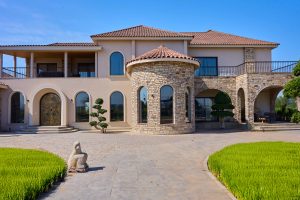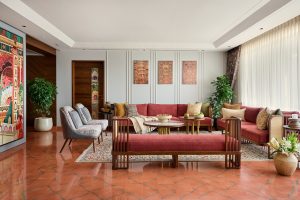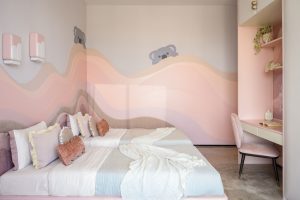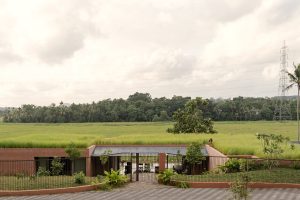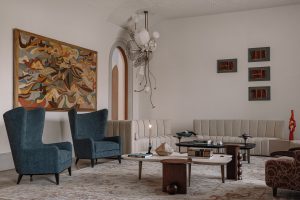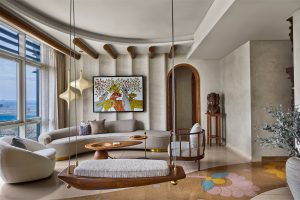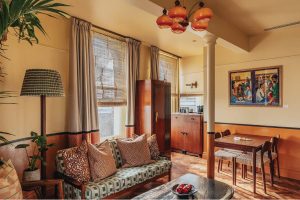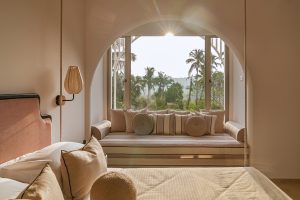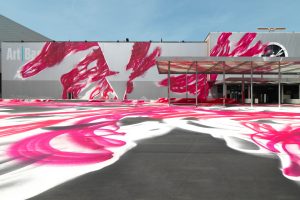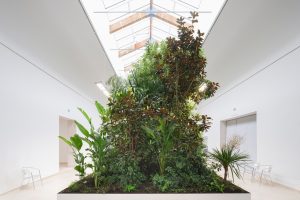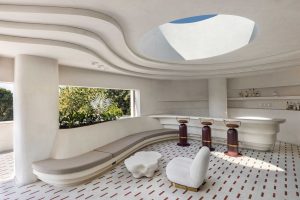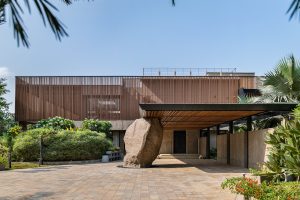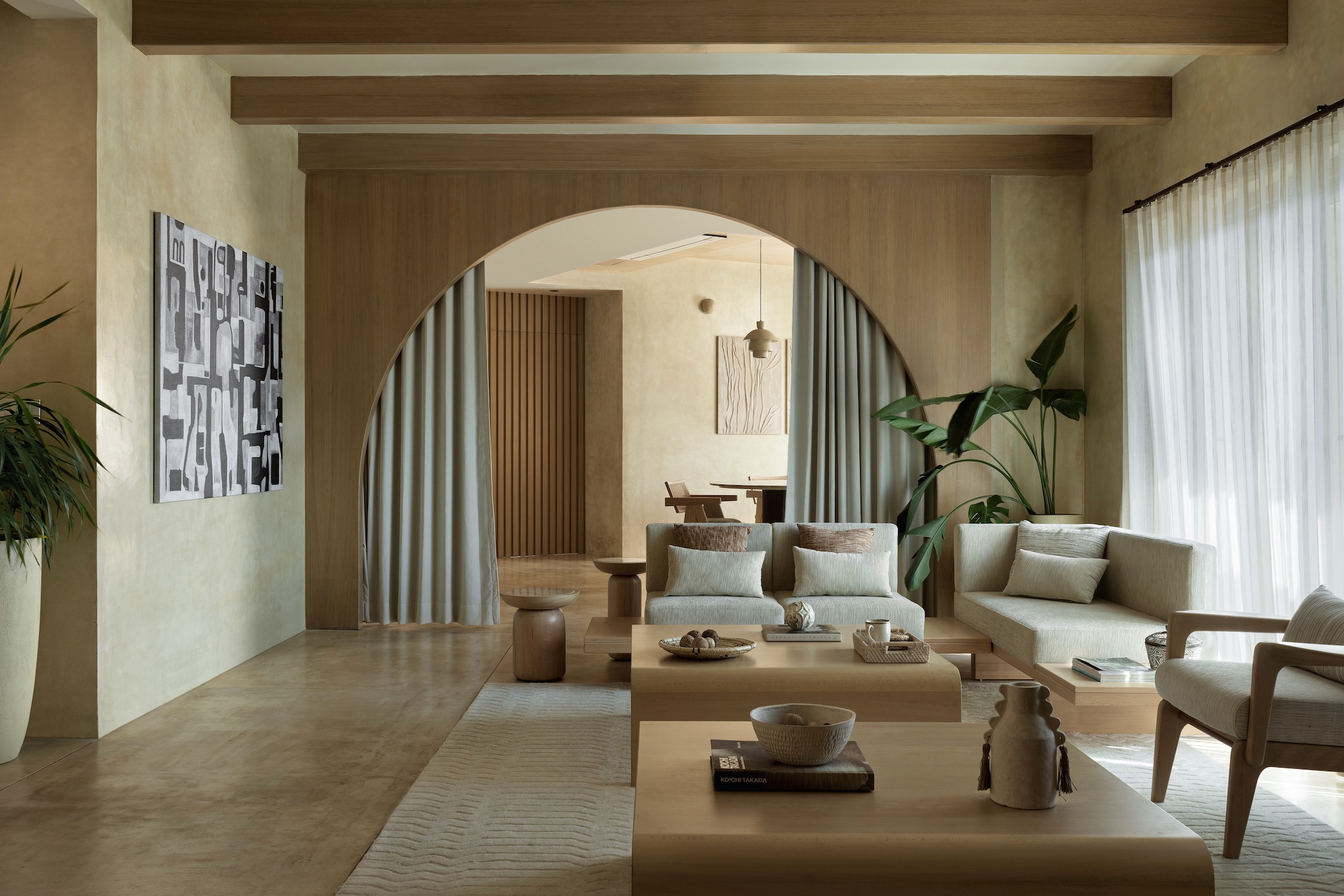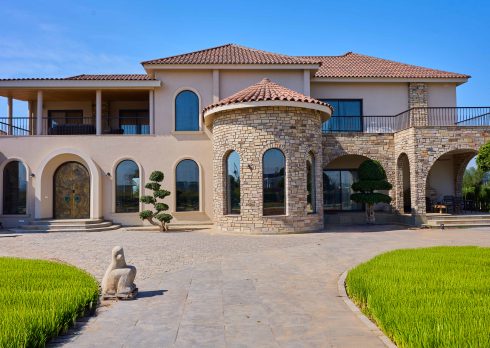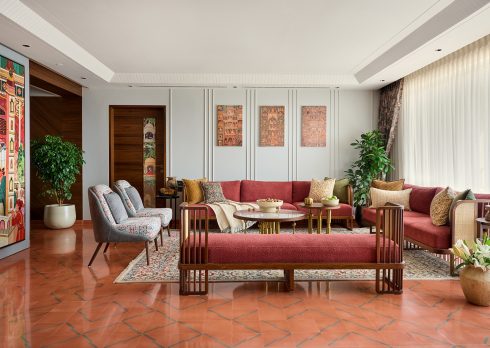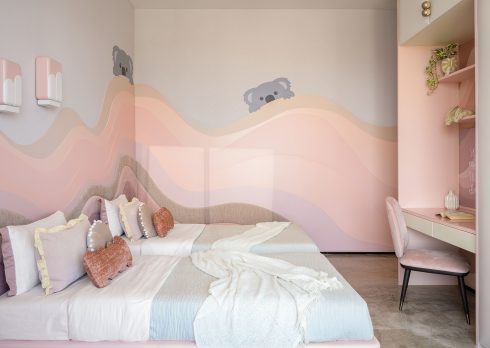A Serene Penthouse In Chennai Is Imbued With Japanese Aesthetics Of Wabi-Sabi And Shibui
The two-storey apartment designed by The Auburn Studio is imbued with a blend of Japanese tranquillity and Scandinavian cosiness.
- 2 Sep '24
- 5:02 pm by Beverly Pereira
Wabi-sabi, the philosophy of embracing the ephemeral, is one among several traditional principles deeply ingrained in Japanese culture. A modern approach to this sensibility has resonated with the design world for a long time now. Yet another, Shibui celebrates the profound richness, beauty and complexity in the quotidian. These concepts inform the philosophy behind a Japandi-infused penthouse in Chennai designed by The Auburn Studio for a couple expecting their first child. Translating the much sought-after sense of tranquillity into something tangible, principal designer Sushmitha Ramesh relied on rafts of restraint paired with the authenticity of materials to craft an elegant home that encourages an appreciation for the beauty in simplicity. Dubbed ‘Shibui’, the apartment is minimally adorned with a fusion of wood, raw finishes, sheer fabrics, natural textures, curves, and clean lines.
Seeking Serenity
The client envisioned the newly purchased home as a peaceful sanctuary for their growing family. Despite her husband being an architect, she wished to lead the design process, exploring options that eventually led to an instant connection with the team at The Auburn Studio. The Chennai-based architecture and design firm is known for crafting spaces that are calming and minimalistic. “She had admired one of our earlier projects, a Balinese-themed beach house, and wanted to incorporate similar elements into her new space. Inspired by this, we suggested the concept of a Japandi home, blending the elegance of Japanese design with the cosiness of Scandinavian style,” Ramesh explains.
Also read: In Hawaii, A 1979-Build Balinese Pod House Is Restored As A Vestibule For Asian Artifacts
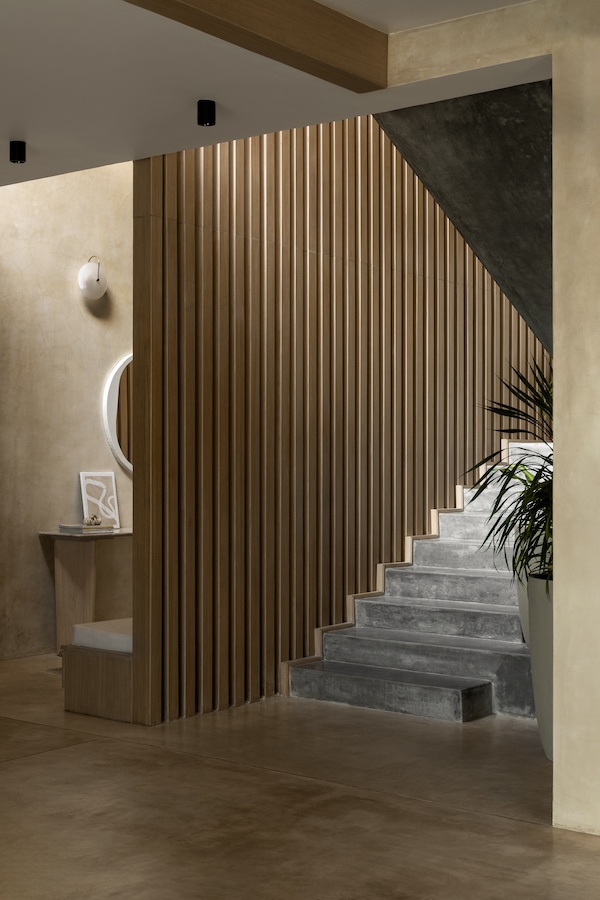
Starting From Scratch
The 4,500-sq-ft apartment came fitted with complete washrooms and finished flooring tiles. Preferring to work with a clean slate, the team stripped the home down to its bare shell. They also reoriented the original staircase at the entrance to create a more welcoming entryway by demolishing the first few steps and reconfiguring it into a dog-legged design. Extraordinary light and height enhance the entry foyer simplistically. A subtle barrier between the foyer and staircase, the double-height wooden louvres add a rich layer of cosiness and fire up the play of light and shadows at different times of the day.
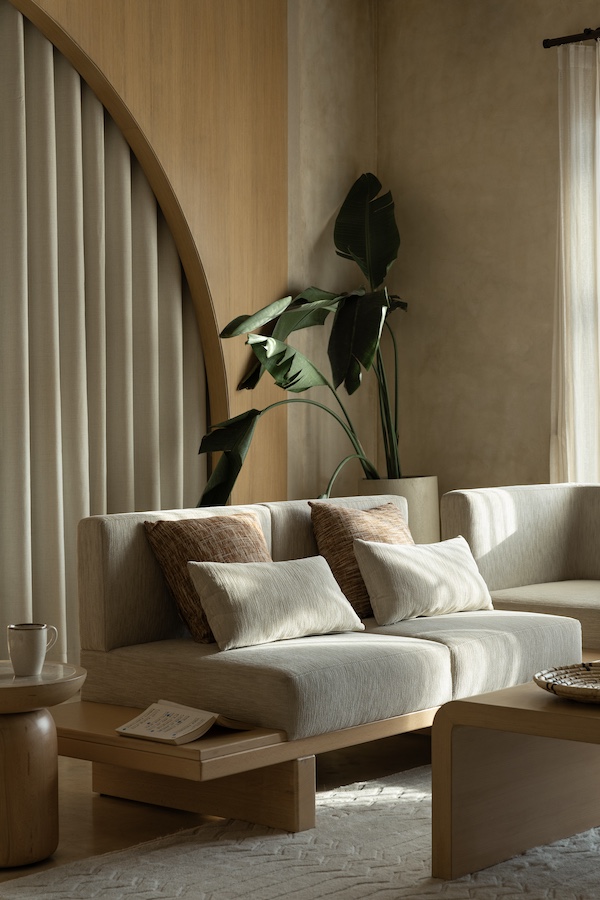
Also read: Explore Nature-Centered Design Secrets With This Stunning Puducherry Home
Less Is More
The formal living room is flanked by a balcony that brings in views of the outside world. Its muted colour palette of light browns and taupes revels in a pared-back aesthetic where less is more. “The blend of light tones with textured finishes in Japandi design seemed like the perfect match for what the clients were looking for. And we weren’t wrong—they instantly embraced the theme, knowing it would create the serene, minimalist atmosphere they desired,” says Ramesh.
Like the foyer, every surface across the apartment—from the flooring to the walls—was treated with an in-situ IPS cement finish to become the ideal backdrop for minimal Scandinavian-inspired furniture. “We began by finishing the flooring and walls with in-situ cement, a choice that would age gracefully over time, embodying the Wabi-sabi philosophy of finding beauty in imperfection,” the designer explains. All pieces of furniture were custom-made with clean lines and simple forms, while décor, although sparse, was sourced from Purple Turtles, Westside Home, Home Centre and H&M Home.
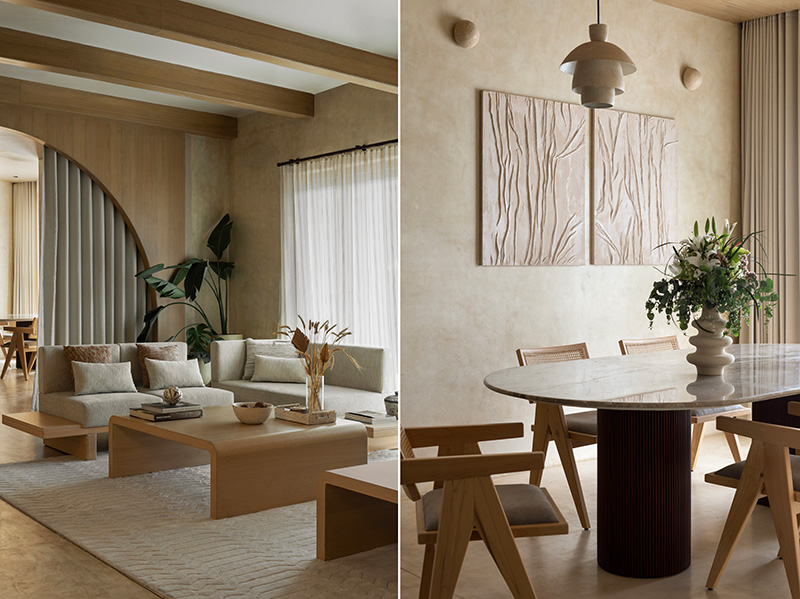
Functional Accents
The adjacent dining room is well within view from the living room, yet distinguished as an intimate space of its own. To create a sense of separation without sacrificing the open flow and airy layout, a wooden arched partition becomes both a functional and aesthetic element that frames the dining room. “The arches in this home were all about adding a sense of softness and warmth to the spaces. We wanted to weave in those soft, curved lines wherever we could. In the living room, the arched openings gently frame the dining area, creating a smooth flow between the spaces. It’s a simple touch but it brings in a sense of calm and elegance,” says Ramesh.
Also read: Shabnam Gupta’s Mumbai Duplex Redefines Maximalist Luxury With A Literary Twist
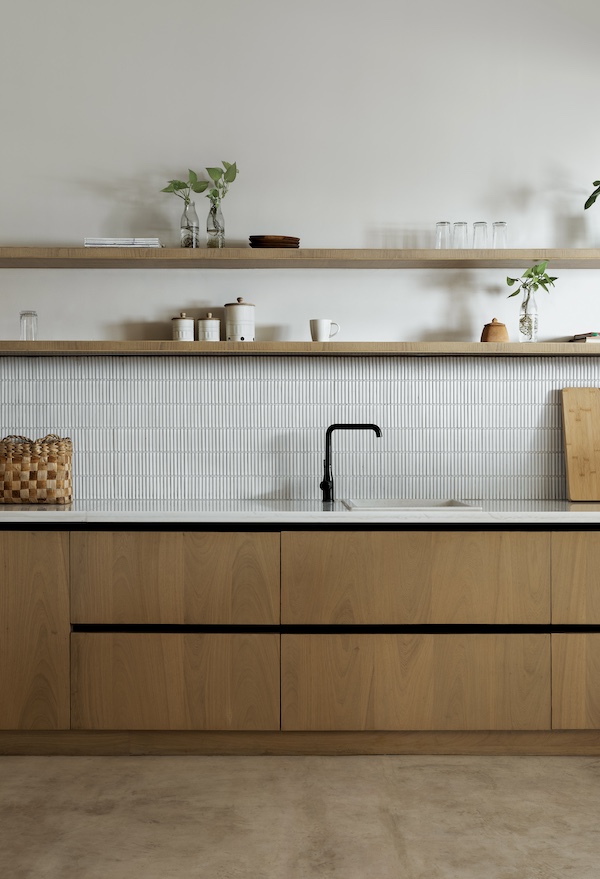
To remedy the lack of natural light in the kitchen positioned to the left of the dining room, Ramesh and her team opened things up by doing away with an entire wall between the kitchen and the utility area. Then, by pairing white glossy kit-kat tiles with a nano-white engineered stone countertop, they optimised the flow of light in the otherwise low-lit kitchen. “These kit-kat tiles are my current favourite—they add a modern touch to the space,” reveals Ramesh.
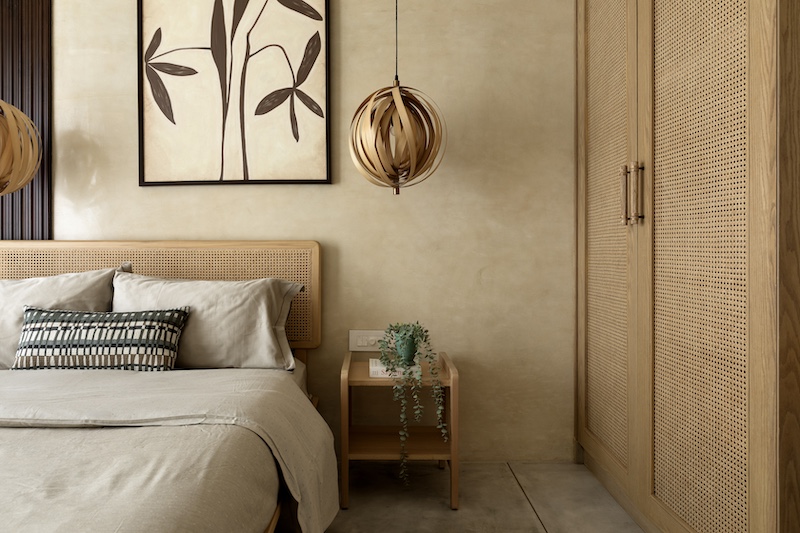
Mindful Decor
Both guest rooms in this apartment were designed to be tranquil spaces with distinctive personalities. In the smaller room on the lower level, a light wood palette with accents of walnut wood and rattan exudes a warm and inviting feel. The décor is simple, allowing for the clean design of bespoke bedside tables to shine.
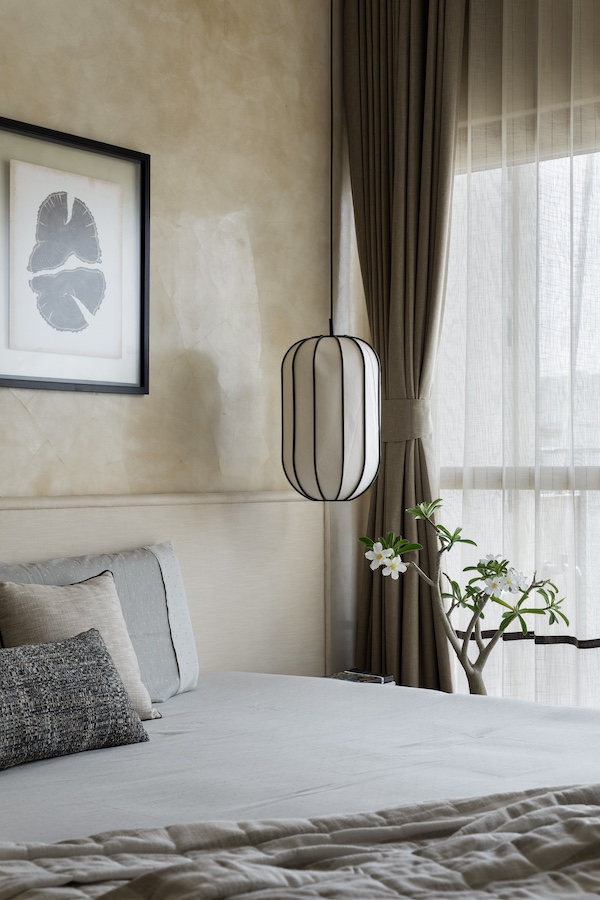
Upstairs, the bigger of the two guest rooms draws from a completely different palette that veers towards darker tones. “We stained the wood a deep chocolate brown, which gave the room a rich, cosy atmosphere. We also introduced shades of grey to add some subtle depth,” Ramesh explains.
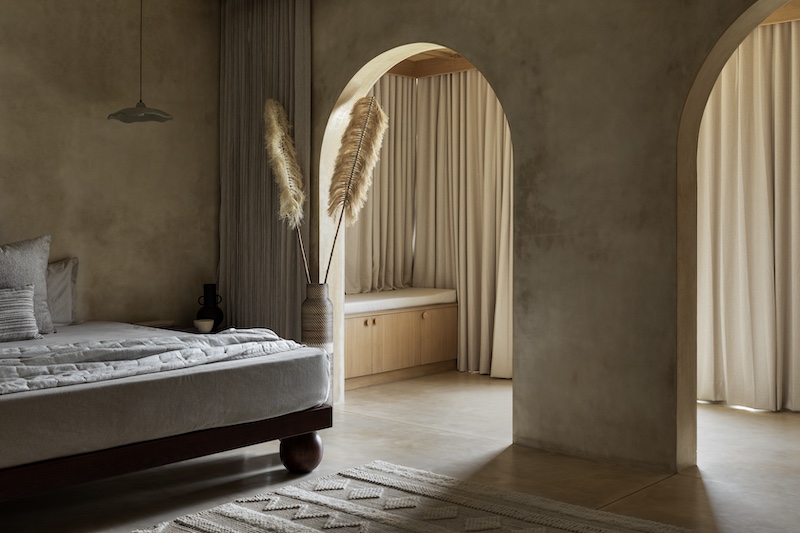
Space For Contemplation
The highlight of this project is undoubtedly the master bedroom where the art of minimalism truly comes into play. An IPS wall finish instantly adds a zen-like dimension to this room where beauty lies in the finest of details. The bedroom’s balcony was incorporated into the layout of the room, beyond arched openings, creating a cosy nook to soak in some sunshine. “The arches helped us balance the clean lines of Japandi design with a bit of timeless warmth and charm,” says Ramesh. To address the issue of heat from the west-facing windows, the ceiling of the nook was finished with bamboo mats that serve the dual purpose of adding a warm, cosy touch.
Designing the master bedroom came with its own set of challenges, says Ramesh who wasn’t satisfied with the original layout. There was no room for a walk-in closet and the washroom felt cramped. A third structural change, the demolition of the washroom of the adjacent fifth bedroom, turned things around to accommodate a spacious walk-in closet. This room comes with an open washroom that not only feels luxurious but is also evocative of a restorative retreat.
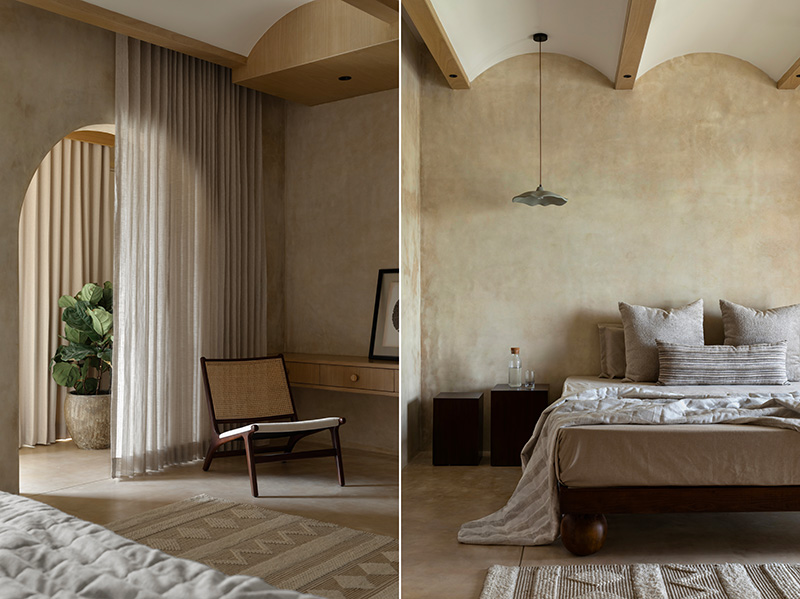
Deviation From The Linear
The ceiling of the master bedroom is a clever fusion of form and function that once again leans into the overarching aesthetic of the home. “This bedroom had a great ceiling height and we wanted to make the most of it while sticking to our minimalism theme. To keep things clean and simple, we introduced gentle curves to the ceiling by adding a series of small arches with wooden rafters running between them,” says Ramesh.
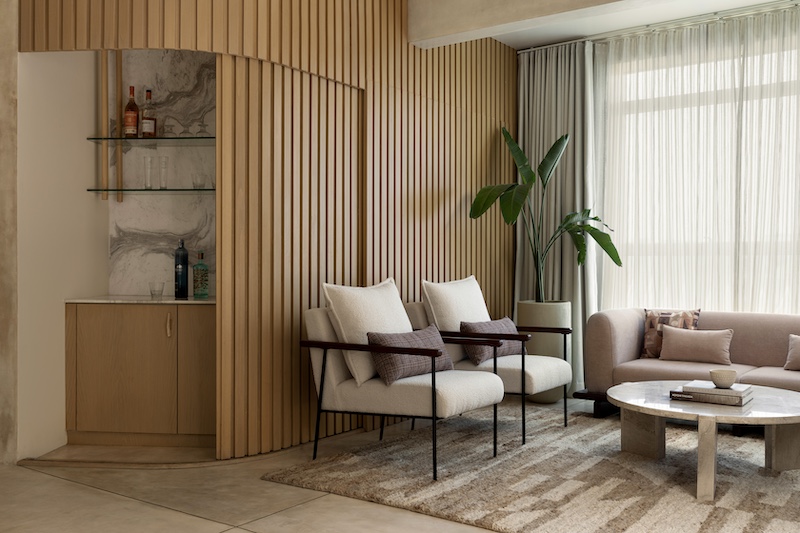
Sheer curtains in the living room upstairs infuse the space with a sense of lightness, while a woollen carpet by Rugberry adds to the cosy atmosphere. (Image Credits: Phosart Studio)
The upper living room is a casual space with a low-saturated colour palette tinged with creams, browns and beiges that serve to soothe. Curves make an appearance yet again—from a rounded sofa and circular centre table, right up to a curved wooden sliding door that cleverly conceals a bar.
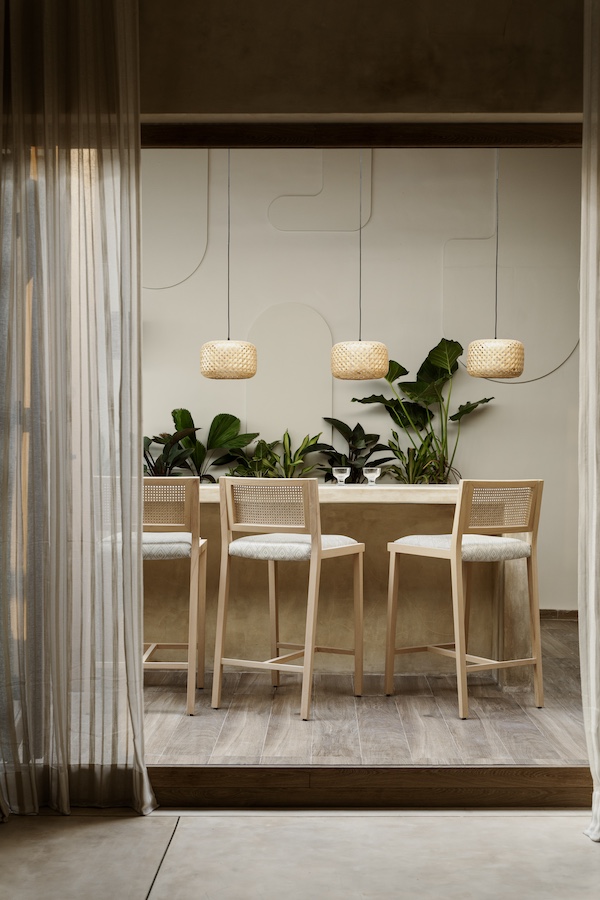
Aligning with the Japanese aesthetic of Shibui, the apartment focuses on the intangible—that much sought-after sense of serenity and calm. Through simplicity, restraint and a detailed approach to design, the home accentuates beauty in the understated and in things that are not instantly obvious.

